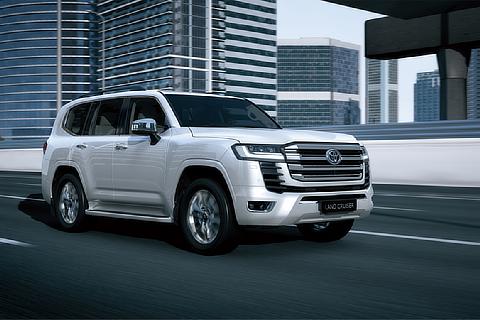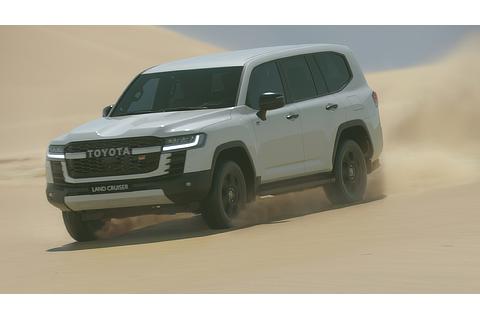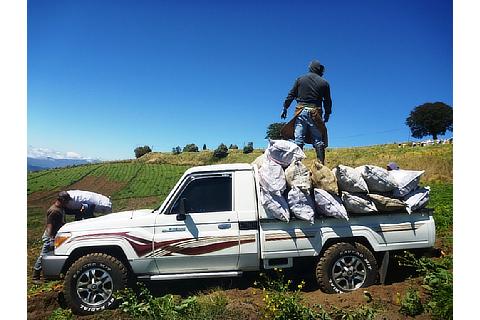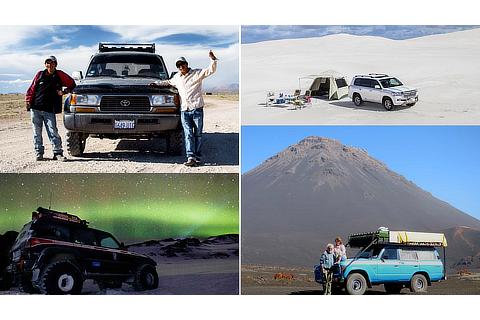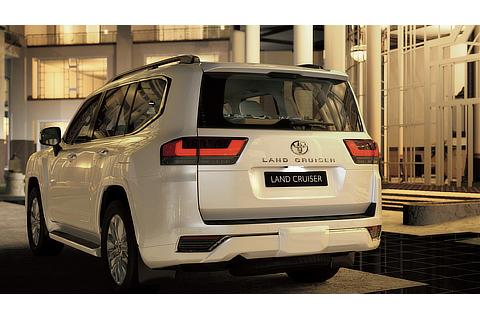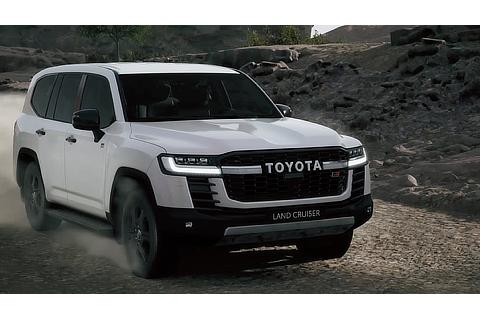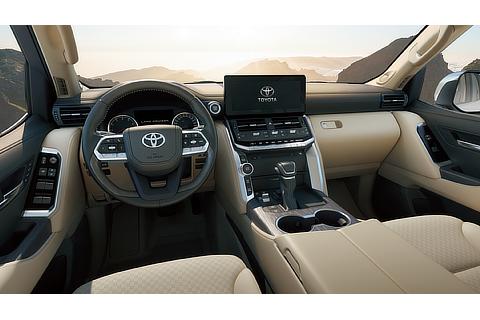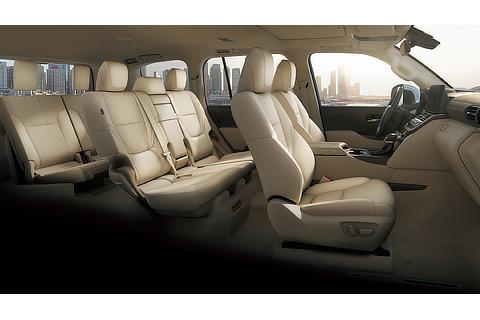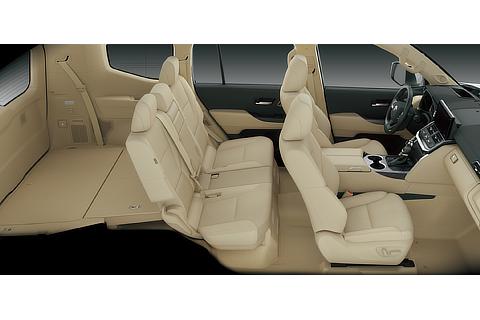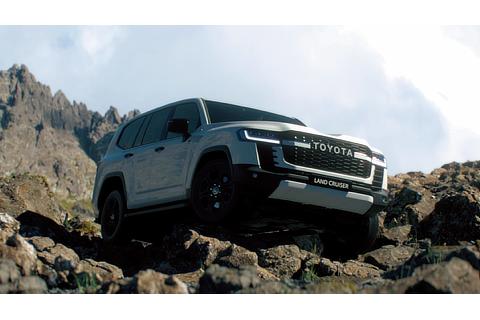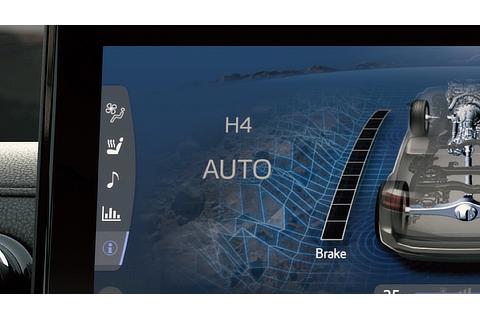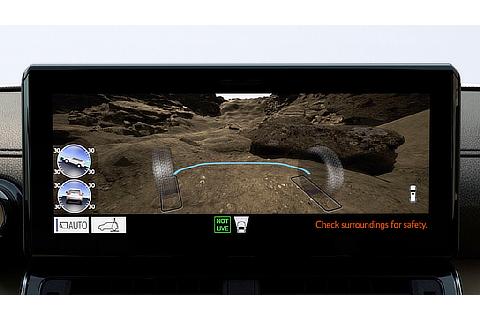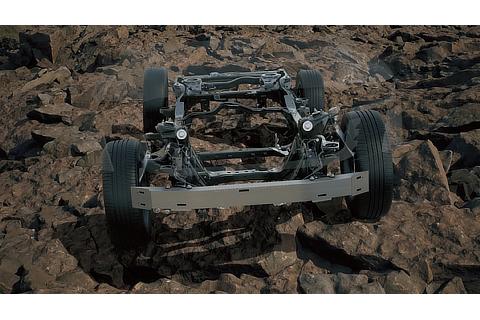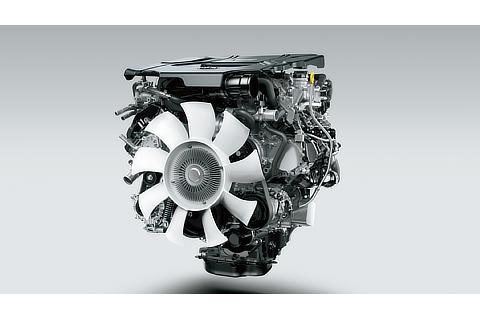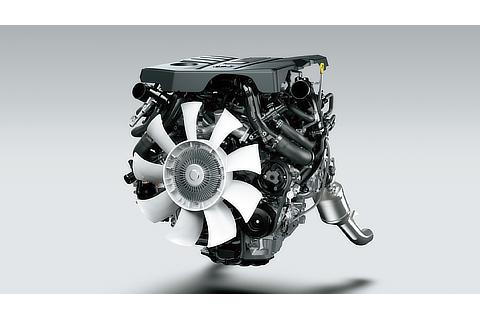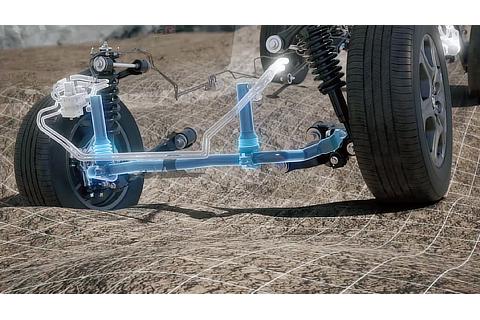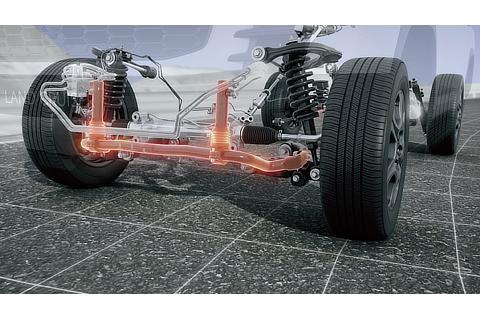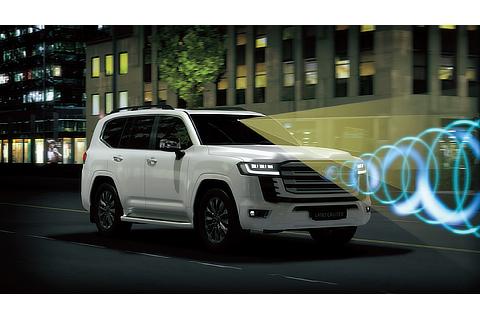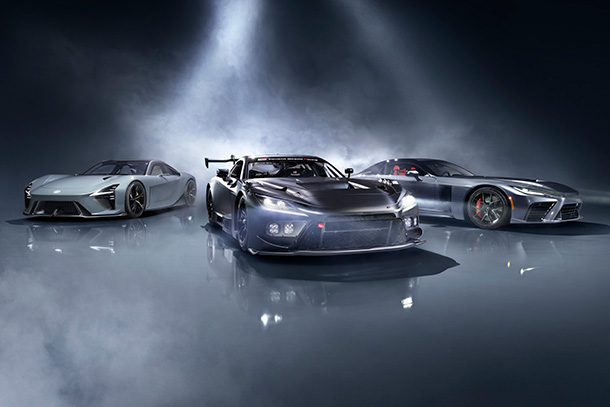Jun. 10, 2021
Toyota's New Land Cruiser Makes World Premiere
- Since its launch in 1951, the Land Cruiser has continued to be selected by customers as a safe and secure vehicle symbolizing Toyota.
- A cumulative total of approximately 10.4 million units and more than 300,000 units a year have been sold in 170 countries and regions all over the world.
- To continue to live up to its reputation among customers as a vehicle that allows people to go anywhere & everywhere and come back alive and safe, the Land Cruiser's unrivaled existence has continued to evolve, improving its reliability, durability, and off-road performance.
- The flagship station wagon model of the Land Cruiser has been completely redesigned.
In this 70th anniversary year of the Land Cruiser, Toyota has completely redesigned its character by merging technologies accumulated over many years with the latest technologies, and is planning to launch it all over the world starting in the summer of 2021.
Toyota City, Japan, June 10, 2021―Toyota unveiled the new Land Cruiser to the world (in a Middle East-centered online reveal).
- The car that symbolizes Toyota's history of delivering safety and security to people for over 70 years
The Land Cruiser was launched in August 1951 as the four-wheel-drive Toyota BJ equipped with a powerful engine, which demonstrated a high level of off-road performance in adverse environments, for example, becoming the first vehicle to climb up to the sixth checkpoint of Mount Fuji. Due in part to its performance record, it began to be adopted as a police patrol car all over Japan.
Thus began the tradition of, "Striving to deliver safety and security to all customers as well as others involved with this vehicle." This tradition would continue for 70 years and can be considered the foundation of a mobility company.
Since then, a cumulative total of approximately 10.4 million units and more than 300,000 units* a year have been enjoyed by customers in 170 countries and regions all over the world. The essence that the Land Cruiser has been maintaining for the sake of customers consists of reliability, durability, and off-road performance.
- As an indispensable tool that supports people's livelihood in places that can only be travelled to and from using the Land Cruiser
- As a vehicle that supports lives in humanitarian aid and disaster relief efforts
- As a vehicle that supports more enriched lives through experiences only the Land Cruiser can provide
Land Cruisers working to support peoples' lives
-
 Land Cruiser Truck in a farm in Costa Rica
Land Cruiser Truck in a farm in Costa Rica -
 Land Cruiser Station Wagons
Land Cruiser Station Wagons
With these applications in mind and to continue responding to customers' expectations of the Land Cruiser as "a vehicle that promises to take you anywhere & everywhere and come back alive and safe," Toyota has been advancing and evolving the Land Cruiser by setting ever-tighter development and evaluation standards as needed, based on the actual usage situations of customers all over the world.
| * | As of the end of 2020. Both the cumulative and annual numbers include the Lexus LX and GX. |
|---|
- Evolving as a car while incorporating the latest technologies as the flagship model of the Land Cruiser series
The redesigned new Land Cruiser (300 Series), the successor to the 200 Series that debuted in 2007, is a station wagon model. As the flagship model of the Land Cruiser series, it has in every generation led the way in vehicle evolution while incorporating the latest technologies.
- The development objectives for the new Land Cruiser were as follows
-
- Inheriting and evolving the Land Cruiser's essence of "reliability, durability, and off-road performance"
- Creating a riding experience that enables the driver to drive with ease on any type of road in the world without tiring easily
With these objectives in mind, Toyota adopted the new GA-F platform based on TNGA while keeping the frame structure, which is the foundation that protects the Land Cruiser's essence. Furthermore, Toyota redesigned the Land Cruiser's character by merging technologies accumulated over many years with the latest technologies, to achieve such improvements as vehicle weight reduction, lowering the center of gravity, the adoption of a new powertrain, and new interior and exterior designs.
Redesign of the Land Cruiser's features with adoption of the new GA-F platform
The frame itself was redesigned to reduce weight and increase rigidity. Various steps were taken, such as the reduction of the total weight of the vehicle (by 200 kg) including the frame and the body, lowered center of gravity, weight distribution, and improved suspension structure. Based on these improvements in features, as well as through improvements obtained through actual driving tests by evaluation members, including in-house drivers with advanced or master-level technical skills and drivers who had participated in the Dakar Rally, Toyota aimed to create a car that is easy to drive and does not easily tire the driver both on-road and off-road.
- To further improve the traditional off-road performance, the following developments and new technologies have been adopted
-
- Improvement in the basic suspension performance (wheel articulation: a number indicating the ability of a tire to stay on the ground)
- Improved road-holding performance through the adoption of the E-KDSS (Electronic Kinetic Dynamic Suspension System) (first in the world)
- Adoption of the Multi-Terrain Monitor, which instantly displays obstacles as viewed from the driver's viewpoint
- Adoption of the Multi Terrain Select, which automatically judges the road surface and selects the best driving mode
Simultaneous achievement of class-leading driving performance, pleasant driving experience, and environmental performance based on a new powertrain
A newly developed V6 twin-turbo engine (3.5-liter gasoline and 3.3-liter diesel) is used to achieve class-leading driving performance and drivability that surpass those of a conventional V8 engine. In terms of environmental performance, Toyota is aiming to globally reduce CO2 emissions by approximately 10%* a year compared with the previous model by combining the newly developed Direct Shift-10AT (10-speed automatic transmission) with lighter body weight.
| * | Based on the in-house weighted average calculation; CO2 emission comparison of the global total amounts between the 200 and 300 series in use |
|---|
Engine and transmission specifications* of the new model (The specifications for representative grades for overseas markets, maximum output and maximum torque values were measured in-house.)
| Displacement | Layout | Transmission | Turbo-charger | Maximum output | Maximum torque | |
|---|---|---|---|---|---|---|
| Gasoline vehicle | 3.5 liters | V6 | 10AT | Yes (twin-turbo) | 305 kW (415 PS) | 650 Nm |
| Diesel vehicle | 3.3 liters | V6 | 10AT | Yes (twin-turbo) | 227 kW (309 PS) | 700 Nm |
| * | Naturally aspirated V6 gasoline engine and 6AT versions are available in some areas. |
|---|
Interior and exterior design in pursuit of the ultimate in functional beauty and a package that places priority on off-road performance
On the exterior, the new Land Cruiser has pursued functional beauty in line with the Land Cruiser's heritage, such as light positions and bumper shape that are unlikely to be damaged during off-road driving. On the interior, a horizontal instrument panel is provided that easily captures the vehicle's position even during off-road driving. Additionally, Toyota pursued operational comfort by positioning switches that can be intuitively operated according to function, and using shape and color designs that improve operability.
As for the package, placing priority on off-road performance, the vehicle size including the total length, total width, and wheelbase, as well as both the departure and approach angles have been kept the same as the previous model (excluding some grades).
Class-leading advanced safety performance befitting the flagship model of the Land Cruiser series
The new Land Cruiser has adopted the latest Toyota Safety Sense active safety package with additional advanced functions. Two functions have been added to the pre-collision system that helps avoid a collision or reduce damage by detecting pedestrians (daytime and nighttime) and cyclists (daytime). The first is a function that detects oncoming vehicles at intersections and oncoming pedestrians crossing the street when the vehicle is turning in either direction. The second is an emergency steering and crash avoidance function, which assists with steering and lane keeping and is triggered when the driver performs a steering maneuver to avoid collision. Furthermore, the new Land Cruiser has adopted the new Parking Support Brake, which helps prevent accidents by recognizing obstacles in front and back of the vehicle in a parking lot, approaching vehicles when the vehicle is backing, and pedestrians.
Having achieved all these evolutions, Toyota plans to launch the new Land Cruiser all over the world starting this summer.
Reference: The Land Cruiser's 70-year history
Successive models
| Model | Sales period | Characteristics |
|---|---|---|
| BJ | August 1951-January 1956 | Original model developed for use by the National Police Reserve. Although the National Police Reserve did not adopt the model, it was adopted as a patrol car by local branches of Japan's National Police Agency. The model became the first vehicle to climb up to the sixth checkpoint of Mount Fuji. The vehicle name was changed to Land Cruiser in 1954. |
| 20 Series | November 1955-December 1959 | Second generation model with external appearance suitably redesigned for civilian use. Overseas export of the model began and played the role of spreading Toyota's reputation of quality and durability overseas (Land Cruiser Strategy). |
| 40 Series | August 1960-October 1986 | Third generation model, which won high acclaim and popularity in the world as a representative cross-country vehicle equipped with the Land Cruiser's essence of reliability, durability, and off-road performance. (24-year long seller, affectionately driven by many customers even today.) |
| 50 Series | August 1967-July 1981 | Full-fledged station wagon type with a totally new and original design. Predecessor to the 300 Series that offered a more spacious interior and increased comfort while retaining the Land Cruiser's essence. |
| 60 Series | August 1980-January 1990 | Station wagon type that succeeded the 50 Series. In keeping with increases in vehicle speed, the treads were widened to improve driving stability. Came fully equipped with comfort-enhanced equipment for private users. |
| 70 Series | November 1984-present | Heavy-duty type that is evolving even now while retaining the Land Cruiser's essence as a successor model to the 40 Series. In 1985, the year following its debut, a light-duty type was derived (the first-generation Prado was born in 1990). The heavy-duty type is still being sold. |
| 80 Series | October 1989-January 1998 | Station wagon type equipped with the highest off-road performance in Land Cruiser history, as well as equipment and ride quality to the level of a luxury passenger vehicle. |
| 90 Series | May 1996-October 2002 | First Land Cruiser that adopted an independent front suspension. A light-duty type with an exclusive body, which further improved on-road performance and ride quality comfort while retaining off-road performance (the second-generation Prado). |
| 100 Series | January 1998-August 2007 | Successor to the 80 Series. It became the first station wagon type to adopt an independent front suspension. In addition to improvement in the basic performance as a 4WD, prestige, on-road performance, and ride quality were improved, making it a luxury 4WD. |
| 120 Series | October 2002-August 2009 | Adopted a newly designed high-rigidity frame. (The first Land Cruiser to adopt a separate frame structure.) A light-duty type with improved off-road performance, including the adoption of electronic control, and on-road comfort (the third-generation Prado). |
| 150 Series | September 2009-present | Light-duty type with further improvement in body rigidity compared with the 120 Series and full incorporation of advanced technology to improve off-road performance (the fourth-generation Prado). |
| 200 Series | September 2007-Spring 2021 | Successor to the 100 Series. A station wagon type that adopted a separate frame structure. The platform was redesigned, enhancing rigidity, durability, collision safety, and interior comfort. |
- For more information on each model
- https://global.toyota/en/mobility/toyota-brand/features/landcruiser/history/evolution/lineage.html
Toyota Motor Corporation works to develop and manufacture innovative, safe and high-quality products and services that create happiness by providing mobility for all. We believe that true achievement comes from supporting our customers, partners, employees, and the communities in which we operate. Since our founding over 80 years ago in 1937, we have applied our Guiding Principles in pursuit of a safer, greener and more inclusive society. Today, as we transform into a mobility company developing connected, automated, shared and electrified technologies, we also remain true to our Guiding Principles and many of the United Nations' Sustainable Development Goals to help realize an ever-better world, where everyone is free to move.
- SDGs Initiatives
- https://global.toyota/en/sustainability/sdgs/








